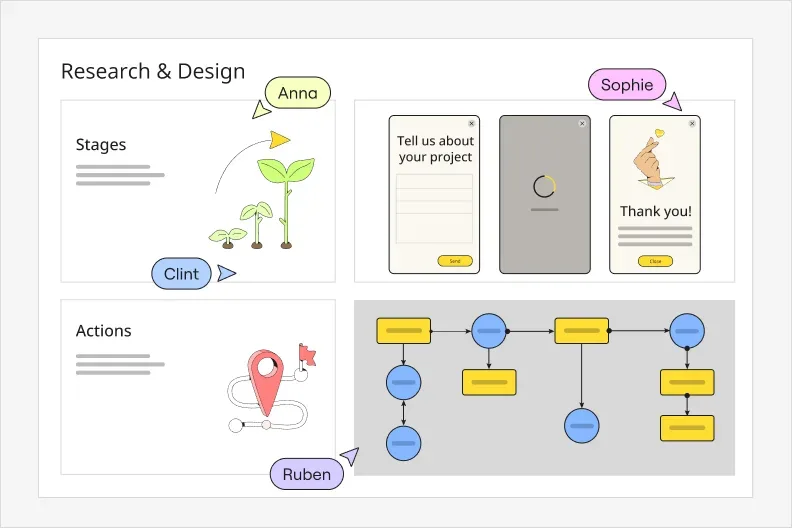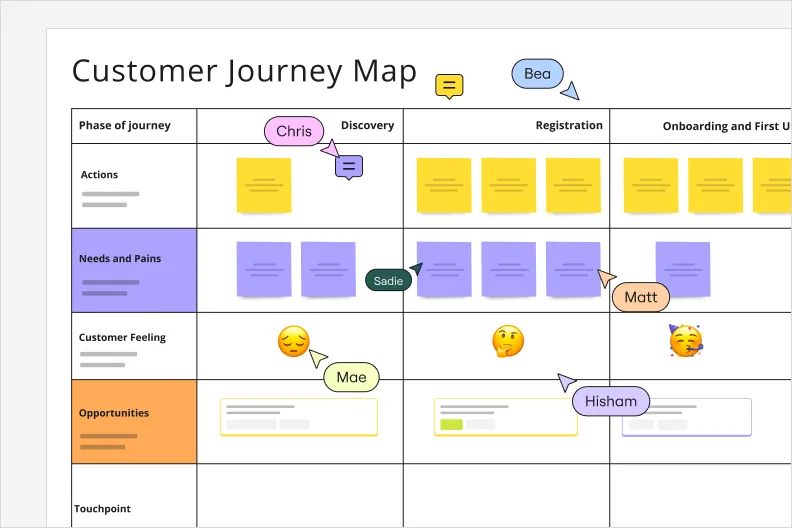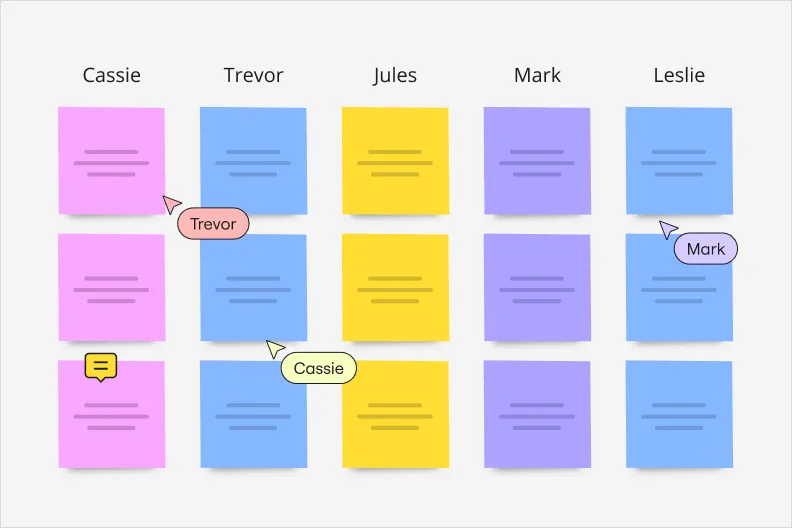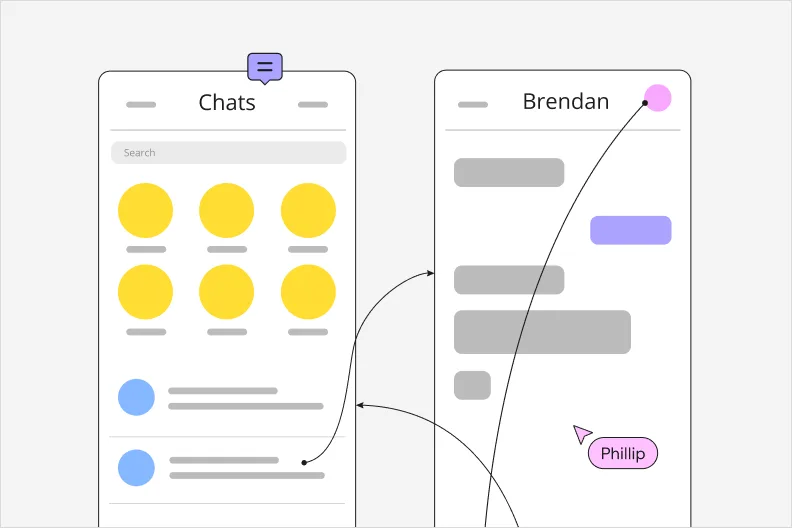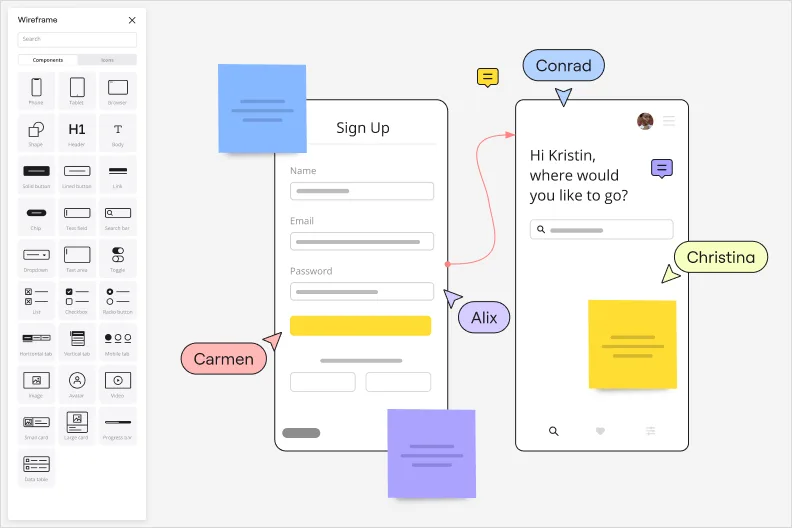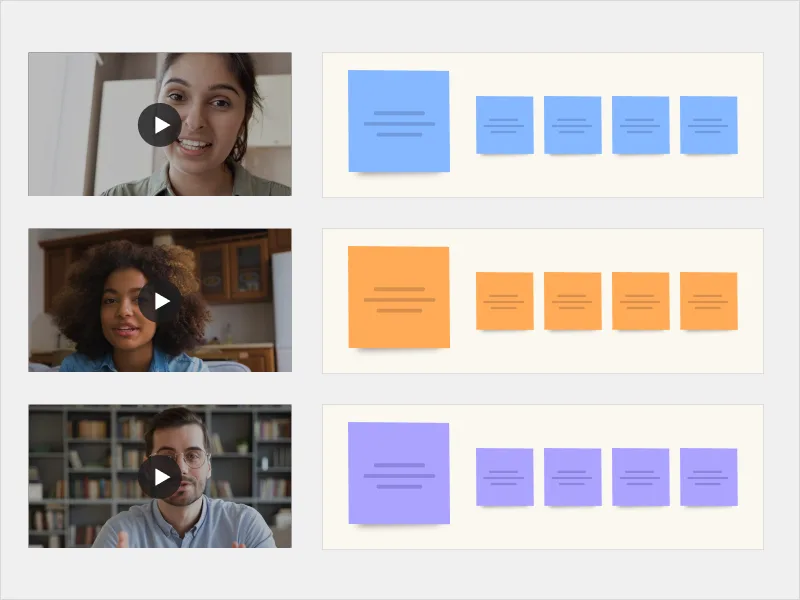Keep your team engaged with Miro’s design sprint tools
Diverge and converge as a team, but smoother
Go from idea to testing, together
Miro makes in-person and remote sprints so much better. Our AI-powered canvas lets you visualize concepts, add sticky notes, and vote in context — without having to consolidate post-session photos or edits. With our design sprint tools, teams stay aligned from ideation all the way through to user testing.
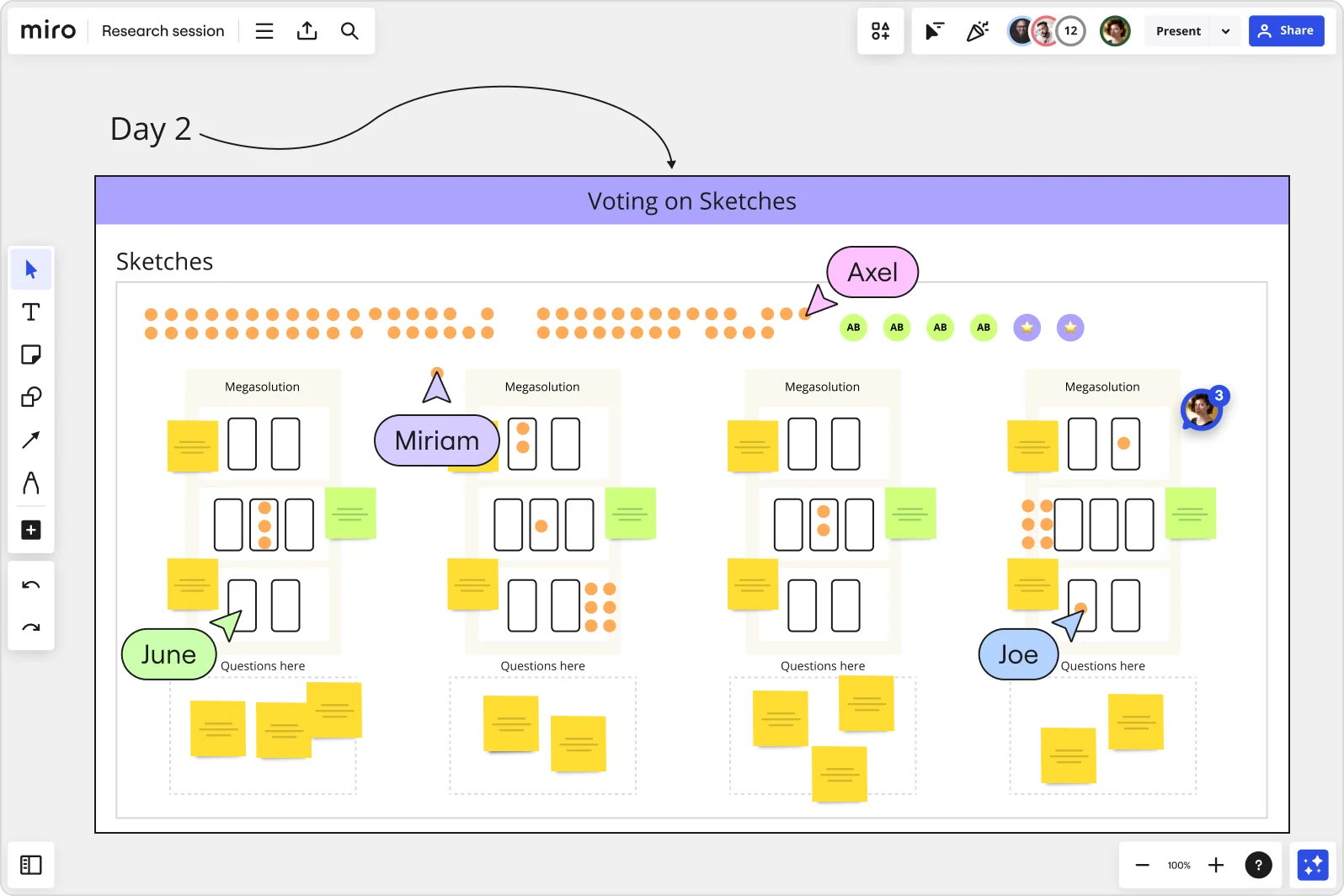
Structured chaos, faster innovation
Use our design sprint templates to help you run activities like journey mapping, crazy 8s, prioritization, and voting. Plus, Miro AI can cluster sticky notes, summarize team input, and identify key insights to help you reach your goals quicker. Everyone gets in on the action, so no more painful handoffs.
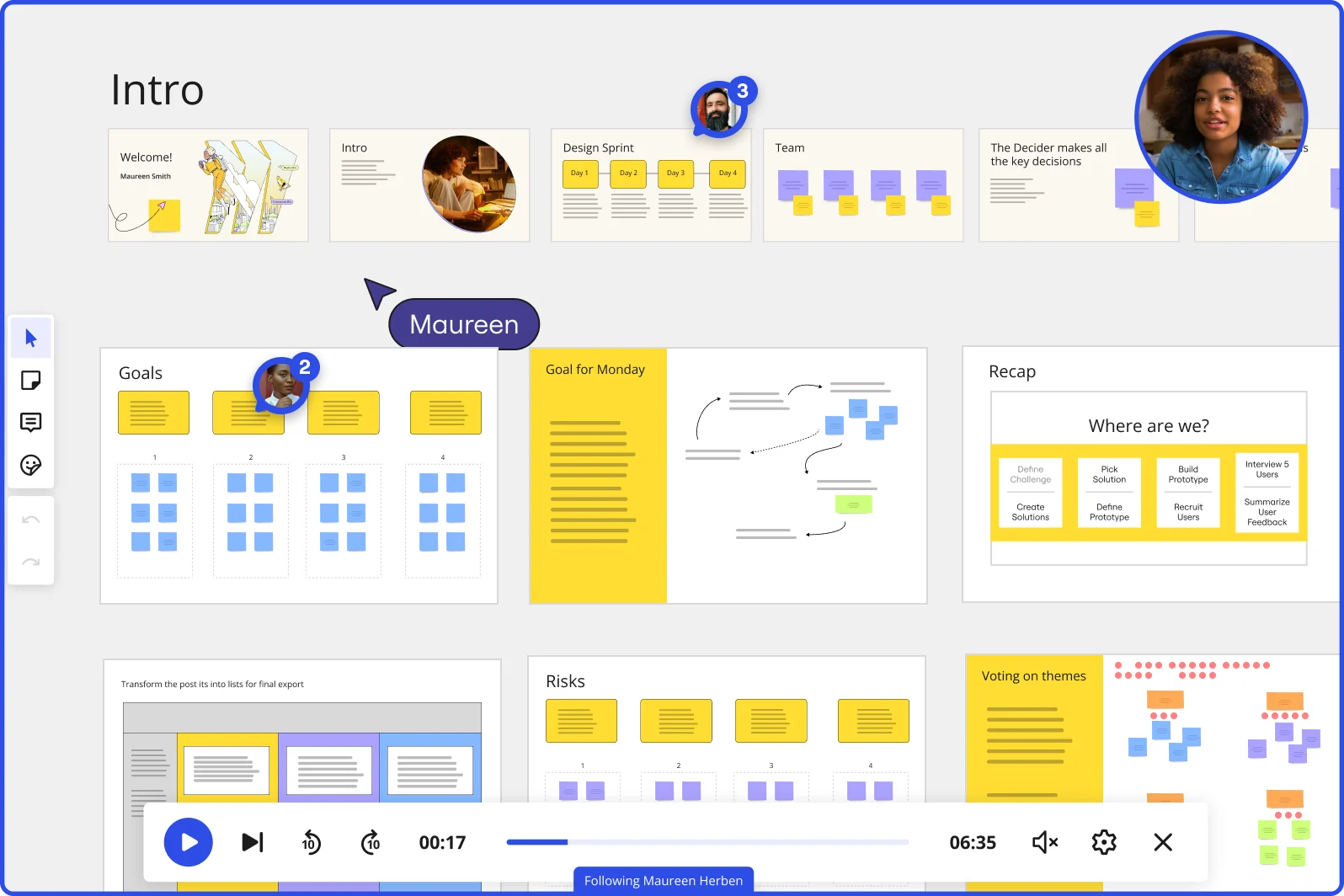
Keep insights alive and plan what's next
Miro boards live way beyond sprints. Automatically convert ideas into Jira or Azure DevOps tasks right on the board, so you can keep going from where you left off and stakeholders stay aligned. With our design sprint tools, your deliverables become a living resource that ensures alignment for everyone.
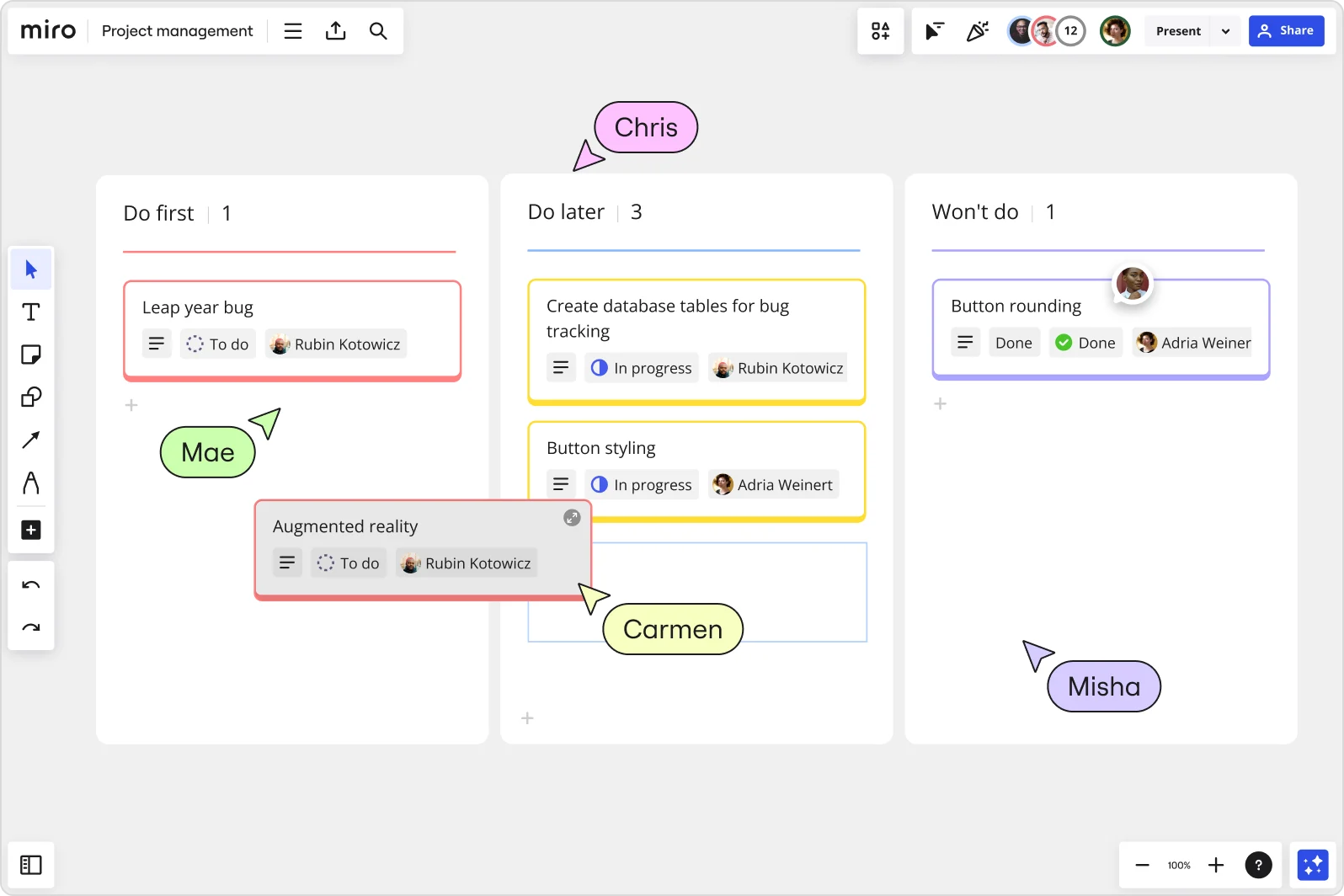
Try the official design sprint template
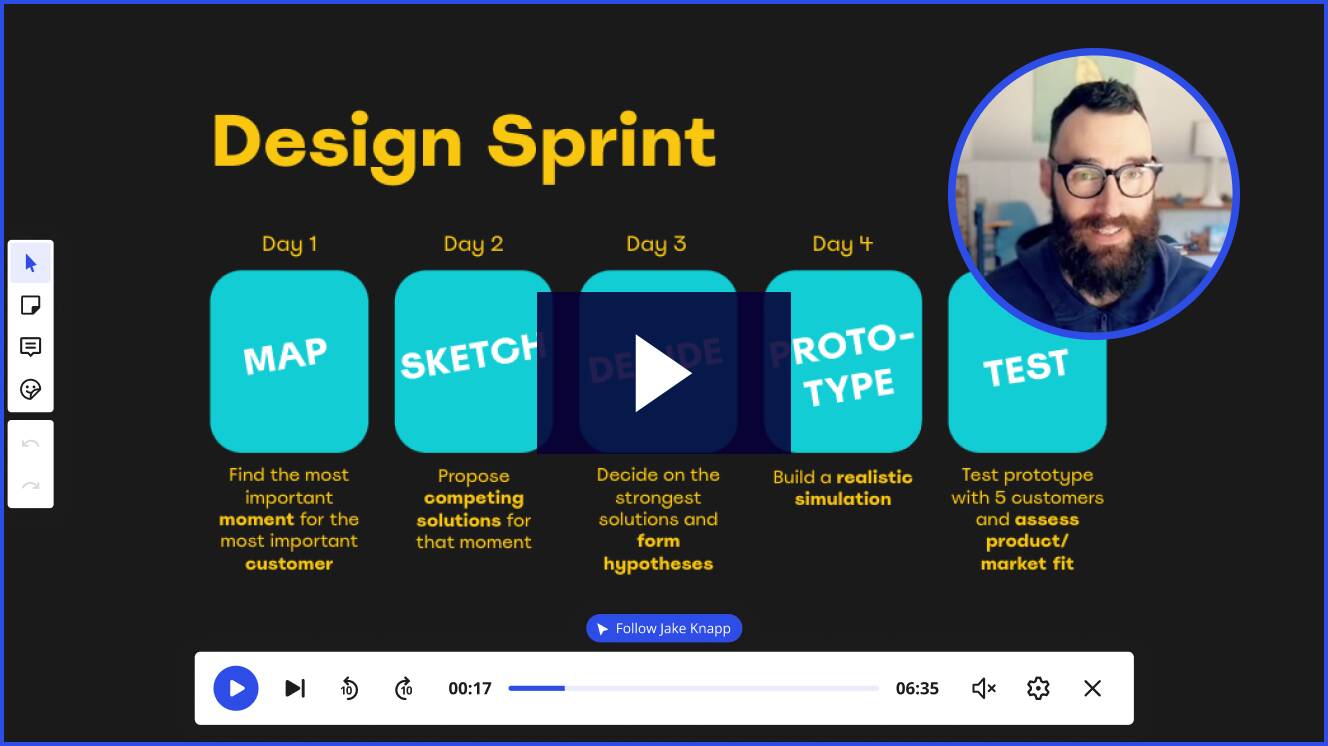
Why use Miro’s design sprint tools?

Organize user research
Design sprints can stall when research is spread across documents and tools. Miro brings findings into one hub, where notes, sticky clusters, and artifacts stay connected. Create a single hub where research is always visible and enable your team to move forward with confidence.

Create low-fidelity prototypes
Building prototypes often takes too much time and detail upfront. With our Wireframe Library, you can drag and drop icons, shapes, and components to build quick mockups and wireframes. These quick builds are perfect for testing concepts during a design sprint, helping you validate ideas early without slowing down.

Get way less context switching
Jumping between tools for research, wireframes, and sprint workshops eats into creative time. Miro keeps everything in one space, so your team can run the full sprint—from research to prototyping—without losing focus. No need to jump between apps or consolidate notes—everything stays connected to keep your design sprint methodology focused.

Use Miro AI for more creative work
Repetitive admin tasks, like clustering inputs or ensuring no ideas are missed, can slow down momentum. After you brainstorm and test ideas, use Miro AI to handle the heavy lifting by organizing feedback, summarizing inputs, and generating prompts to spark fresh ideas. Speed up repetitive tasks during design sprint planning and give your team more space for creativity and collaboration.
Related pages
Related templates

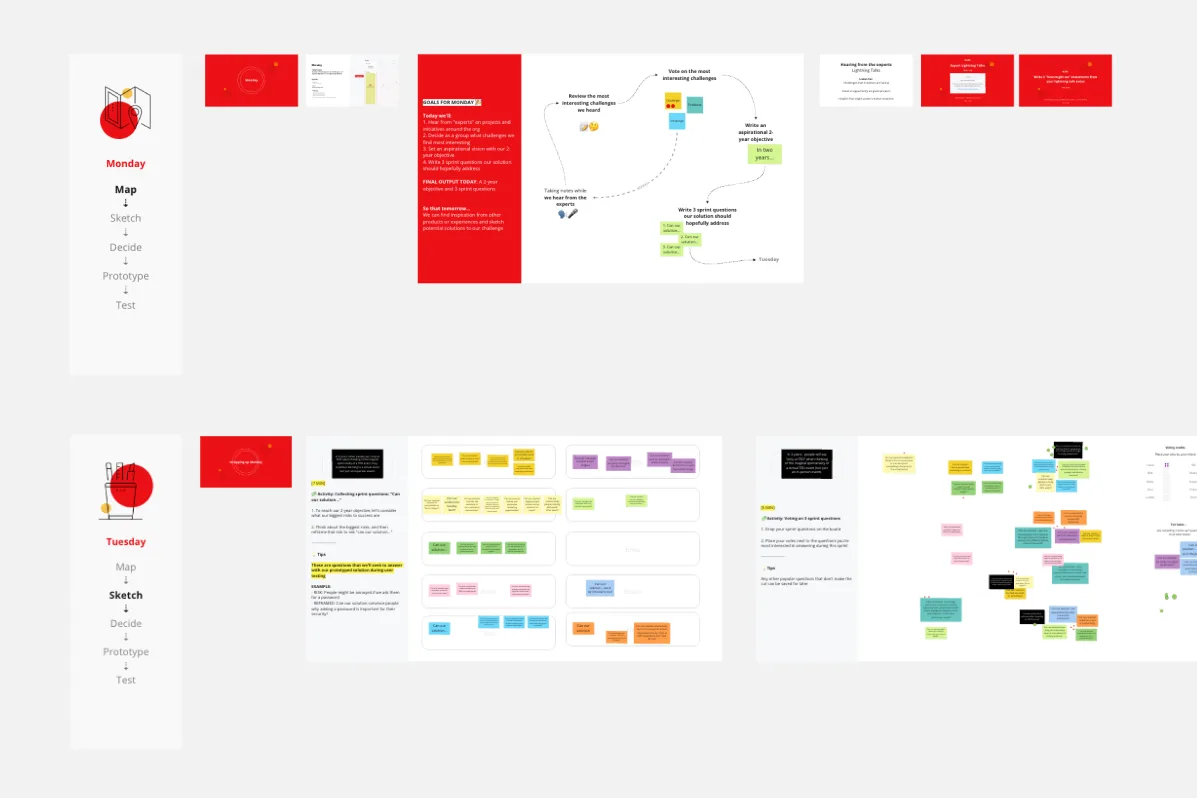
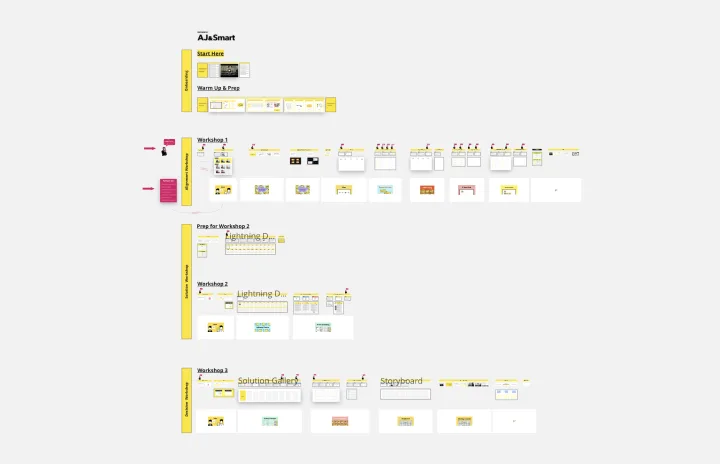
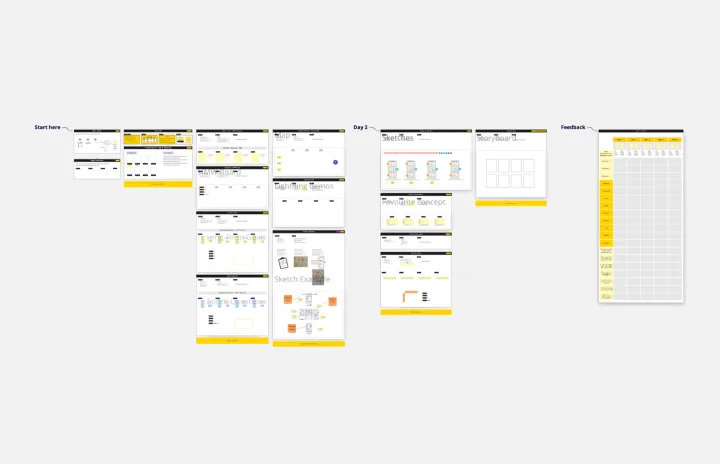
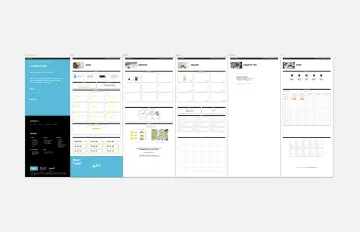
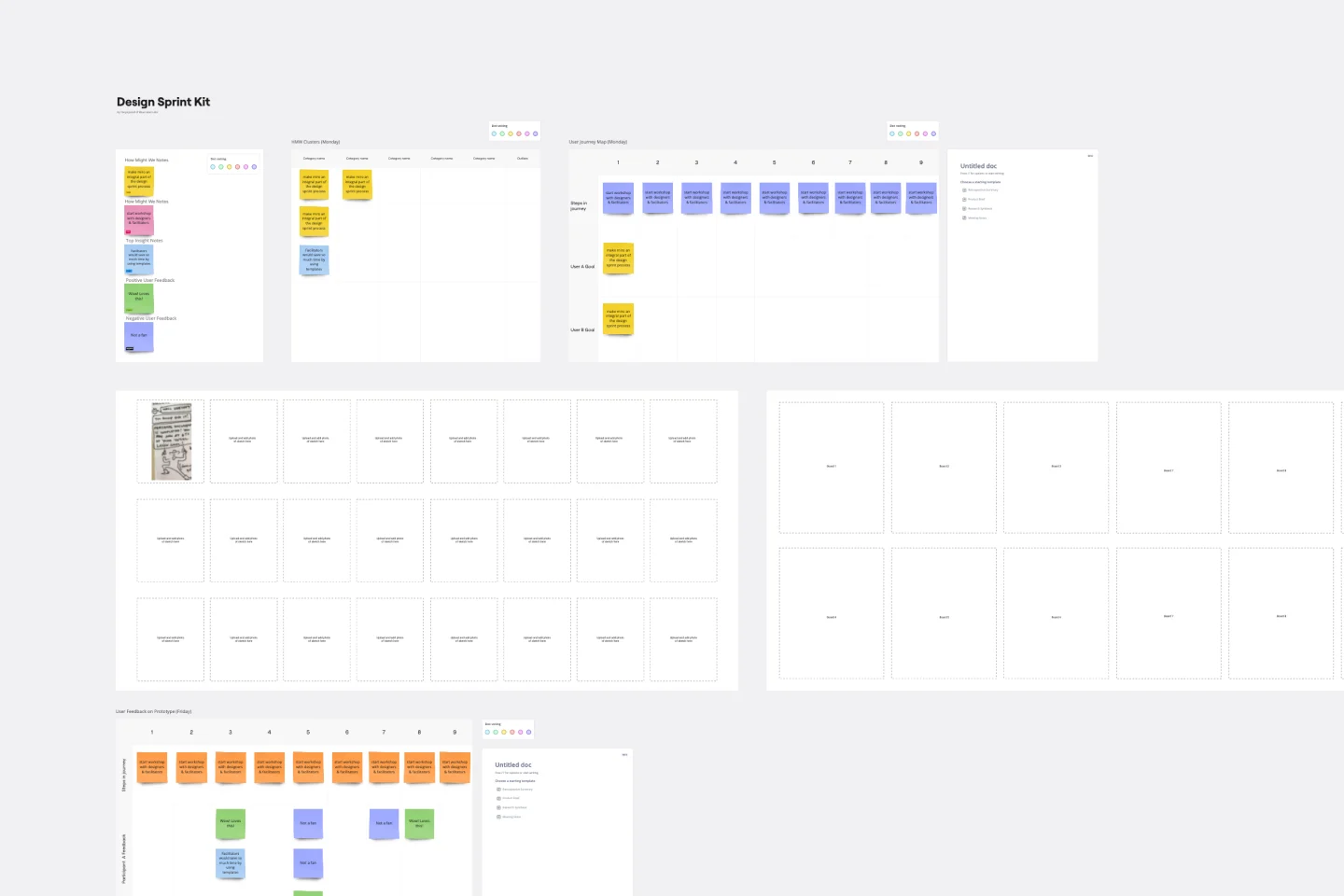
How to use Miro’s design sprint tools
Start the sprint by defining goals and problem statements. Use Miro’s templates for user journey mapping, personas, or empathy maps to explore customer challenges and align the team on the bigger picture.
Collaboration features like sticky notes, clustering, and Private Mode make it easier for everyone to contribute insights, whether you’re running an in-person workshop or a virtual design sprint.
Examine various sources of inspiration and generate as many ideas as possible through brainstorming sessions and sketching exercises. With Miro’s infinite canvas and built-in diagramming tools, you can map dozens of ideas without space constraints. Organize your contributions into clusters or categories with Miro’s AI-powered sticky note summarization to quickly spot patterns.
Review and prioritize your ideas. Miro’s facilitation tools, like voting, timers, and reactions, guide structured discussions and decision-making. Once the team is aligned, you can transform winning ideas into storyboards directly on the board. By using Miro as your remote design sprint tool, all decisions remain visible and accessible. This makes it easier for stakeholders to track progress and understand the rationale behind each decision.
Turn your chosen ideas into prototypes, wireframes, or mockups of the solution using Miro’s Wireframe Library and drag and drop UI components. Then, conduct user testing sessions from your board to gather feedback and iterate on the prototype as needed. With real-time collaboration, teams can refine designs on the fly, resulting in a tested, validated solution that’s ready for the next phase of development.
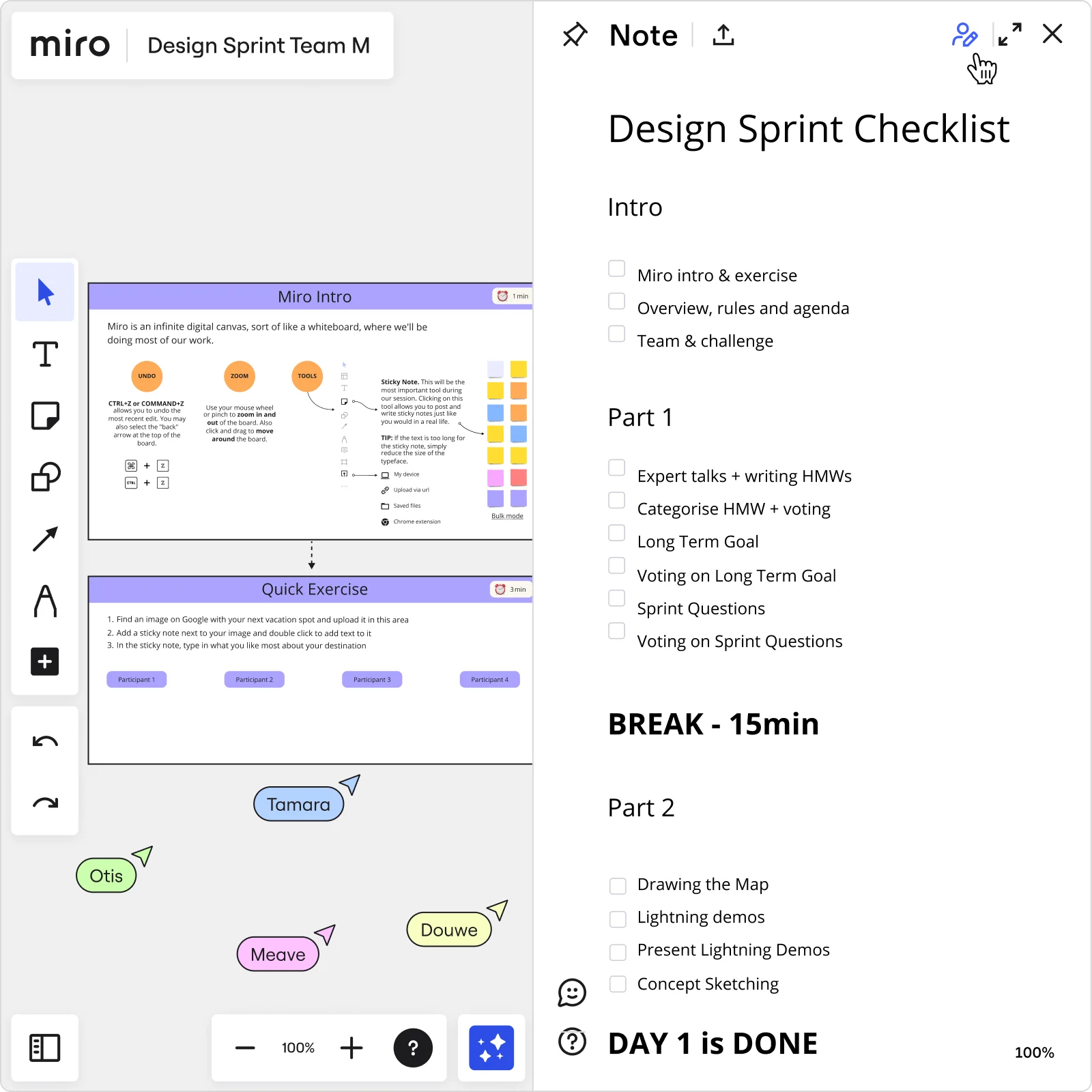
Design sprint FAQs

What are the phases of a design sprint?
Design sprints typically have five phases: Understand, Sketch, Decide, Prototype, and Test. The 'Understand' phase involves understanding the problem, business goals, and target audience. 'Sketch' is the brainstorming stage to generate solutions. The 'Decide' phase involves picking the most feasible solutions. The 'Prototype' phase is about creating a simplified model of the chosen solution. And finally, the 'Test' phase involves gathering feedback from users to validate or iterate the prototype. These all can happen right in Miro.
What’s the difference between Agile and design sprint?
Agile is a project management and product development approach that prioritizes iterative progress, flexibility, and collaboration. It’s all about breaking down a project into smaller parts, referred to as "sprints" (usually 1-4 weeks), and continuously iterating based on feedback. On the other hand, a design sprint is a time-boxed process used to answer critical design questions through rapid prototyping and testing ideas. Both methodologies are similar in their iterative nature. But Agile is generally a broader ongoing approach, while a design sprint is typically a one-time, focused, five-day process used to kickstart a project or solve a particular problem.
How does Miro help my team collaborate on sprints?
By centralizing collaboration in one intuitive workspace, Miro helps your teams run better design sprints, faster. Whether you’re running an in-person sprint or need remote design sprint tools, Miro supports both real-time and asynchronous teamwork.
Your team can co-create on the canvas, add sticky notes, vote on ideas, and record Talktracks for async feedback.
Where can I find resources or design sprint templates?
Miro is home to a community-driven library known as the Miroverse. Here, you can find thousands of templates created by other Miro users and industry leaders.
Explore sprint design templates, ideation frameworks, and design sprint examples to help you get started.
Is Miro AI easy to use for design sprints?
Miro AI is designed to make the design sprint process easier, using the canvas as your prompt and removing the need for a complex setup. You can cluster sticky notes, summarize brainstorm results, or speed up design sprint planning by quickly identifying recurring themes.
Can Miro handle large-scale design sprints?
Absolutely! Miro is designed to scale with your team’s needs, whether you’re running small workshops or global, multi-team sprint events. With features for every stage of the design sprint process, Miro supports complex projects without slowing you down.
Can Miro be tailored to fit my workflow?
Miro is highly flexible and customizable, making adaptations to your workflow completely possible. You can create custom boards or reuse proven design sprint templates to streamline setup.
For scaling your own processes, Miro Blueprint offers pre-configured spaces with boards, tools, and formats all ready to go.
How does Miro integrate with other tools?
Miro integrates with over 160 tools, including Jira, Asana, and Google Docs, making it the ultimate hub for design sprint planning. For example, you can embed live tickets from Jira directly on your sprint board, track progress, and move through the process without switching platforms.
Is Miro secure for running design sprints?
Yes. Miro is built with enterprise-grade security to protect your sprint data. You’ll have advanced user and access controls, so you can manage who can view or edit boards. If you’re using Miro AI, you can rest assured that your data and designs are never used to train AI models.
